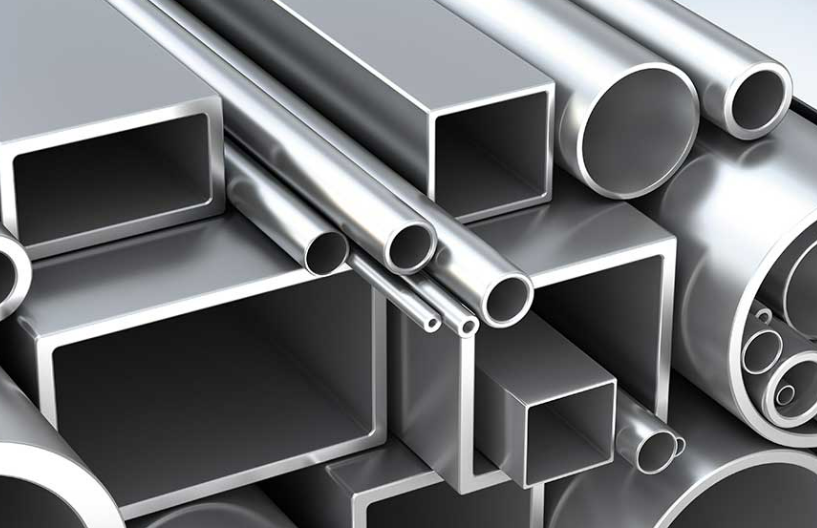Stainless steel round tubes and square tubes are very common in life, whether they are national standard or non-standard. The amount of these two shapes of stainless steel is almost the same. In addition to the difference in cross-section, there are still other differences between stainless steel round tubes and square tubes. Today, we will give you a detailed introduction to the differences between stainless steel round tubes and square tubes.

What’s the Difference between Stainless Steel Round Tubes and Square Tubes?
Difference in production: Round tubes are made by extruding stainless steel steel strips into a circular shape and then welded online. Square tubes are made by first making round tubes and then extruding them into square tubes through a mold. Square tubes have an extra process, so the price will be higher.
Difference in tube wall technology: The outer wall of stainless steel round tubes is mostly polished, while square tubes are made with a brushed finish. This is because the four corners of square tubes are difficult to polish, and square tubes are more prone to scratching, so making a brushed finish can reduce the visibility of scratches. Some round tubes have a sanding effect on the surface to prevent slipping, and the particle size can be adjusted.
The inner wall of round tubes can be polished, and the brightness is relatively uniform. Stainless steel square tubes cannot be polished due to internal structural issues, especially the four corners, which are difficult to polish, and even if polished, they are not uniform enough.
Difference in tube port technology: The port of round tubes can be processed with techniques such as necking, flaring, reducing the tip, reducing the diameter, rolling edges, and chamfering, but square tubes cannot be processed in this way.
Fourth, difference in quality control: The roundness of stainless steel round tubes is difficult to control during production and storage, often resulting in situations such as body indentation and port deformation, especially for tubes with smaller wall thicknesses. Square tubes are prone to four sides inward indentation and difficulty in controlling the R-corner, which are caused by poor mold precision and insufficient experience of the operator.
Fifth, structural stress difference: The surface of round tubes experiences more uniform stress; stainless steel square tubes have four 90-degree corners that are not easy to rotate or twist, making them more secure when fixing certain objects. In home-improvement items such as doors, security windows, etc., square tubes are generally used as frames, and round tubes are used as linings. By combining them, the items are both secure and able to withstand external force impacts.
Sixth, difference in use: Square tubes and round tubes can often be used interchangeably, but there are specific situations where they are not. Due to the structure of stainless steel round tubes and the reason that the inner wall can be polished, the wall is not prone to fouling and is easy to clean, making it the preferred choice for fluid transportation; square tubes are prone to fouling and cleaning inconvenience, so they are generally not used for fluid transportation. Due to the greater moment of inertia of square tubes than round tubes, they are more secure, so when used as structural supports, square tubes are selected as the main components.
Conclusion
Thank you for reading our article and we hope it can help you to have a better understanding of the differences between stainless steel round tubes and square tubes. If you want to find more information about stainless steel products, we would advise you to visit Sino Stainless Steel for more information.
As a leading supplier of stainless steel products across the world, Sino Stainless Steel provides customers with high-quality stainless steel strips, stainless steel coils, stainless steel plates, stainless steel sheets, stainless steel bars, and stainless steel tubes at a very competitive price.
 :+86-13012867759
:+86-13012867759  :export86@sino-stainless-steel.com
:export86@sino-stainless-steel.com